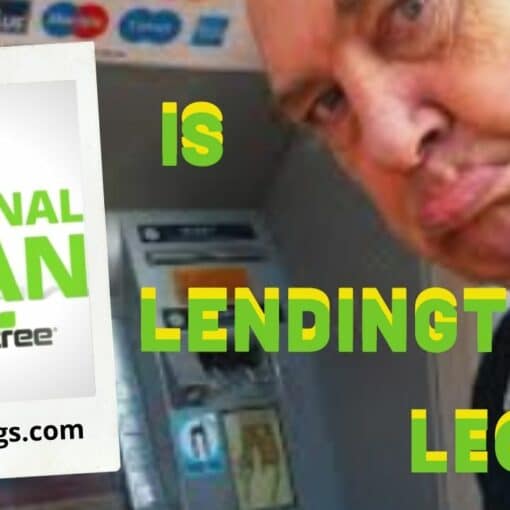What Is Bank-Owned Life Insurance (BOLI)?
 Bank-owned life insurance (BOLI) is a form of life insurance purchased by banks for their key employees. However, the bank is the beneficiary and also usually the owner of the policy. This insurance is used as a tax shelter for financial institutions. They leverage its tax-free savings provisions as funding mechanisms for employee benefits.
Bank-owned life insurance (BOLI) is a form of life insurance purchased by banks for their key employees. However, the bank is the beneficiary and also usually the owner of the policy. This insurance is used as a tax shelter for financial institutions. They leverage its tax-free savings provisions as funding mechanisms for employee benefits.
All employee benefits for these selected employees are covered under the plan and paid out from this fund. All premiums paid into the fund, in addition to all capital appreciation, are tax-free for the bank. As a result, banks can use the BOLI system to fund employee benefits on a tax-free basis. In effect, bank-owned life insurance is a kind of tax shelter providing funds (tax-free) to the bank to offset costs.
National banks may purchase and hold certain types of life insurance called bank-owned life insurance (BOLI) under 12 USC 24 (Seventh). Banks can purchase BOLI policies in connection with employee compensation and benefit plans, key person insurance, insurance to recover the cost of providing pre- and postretirement employee benefits, insurance on borrowers, and insurance taken as security for loans. The OCC may approve other uses on a case-by-case basis. (Source: occ.treas.gov)
How Bank-Owned Life Insurance (BOLI) Works
BOLI contracts are primarily used by banks to fund employee benefits. They allow for much lower rates than would otherwise be required. The bank sets up the contract and then makes payments into a specialized fund set aside as the insurance trust. Bank-owned life insurance (BOLI) is a form of life insurance used in the banking industry. This type of insurance is used as a tax shelter by banks and funds employee benefits. A significant concern for banks is the credit quality of the BOLI issuer. The concern is that the issuer remains financially solvent over the life of the contracts. The U.S. Department of the Treasury’s Office of the Comptroller of the Currency (OCC) allows banks to purchase BOLI policies:
“in connection with employee compensation and benefit plans, key person insurance, insurance to recover the cost of providing pre- and postretirement employee benefits, insurance on borrowers, and insurance are taken as security for loans on a case-by-case basis.”
Why Do Banks Want to Own Life Insurance?
The idea behind bank-owned life insurance is simple. First, the banks purchase life insurance policies for certain employees. Then, the bank pays the premium, which has a cash redemption value. The bank owns the policy and is also the beneficiary upon the death of the employee. Basically, the bank sets up the insurance contract, makes payments into a specialized trust account. All employee benefits are then paid out from the fund’s proceeds. In other words, BOLI is used to offset the costs of providing employee benefit programs.
The gains and payouts from the life insurance policies are both tax-free. As a result, this is a creative tax-free way for the banks to fund their employee benefit programs. It also helps to offset the potential loss of a valuable executive should he decide to ever leave the bank.
There are three types of BOLI products currently offered to banks:
- General Account: This is the oldest form and still the most common product in the market today. When banks make an investment in a general account product the deposit becomes part of the general account of the insurance carrier. Most insurance carriers primarily invest in real estate and bonds. The carrier does not provide specific detail on where they are investing the BOLI proceeds. Rather, they provide some detail of the general account holdings of the carrier. The product has a current crediting rate which can change from time to time by the carrier. But there is a guaranteed minimum crediting rate that it cannot fall below.
- Separate Account: Under this approach, the carrier segregates the holdings from their general account into bank eligible investments. These investments are managed by well-known fund managers. The fund managers provide detailed reporting of the assets within the portfolio. The crediting rate is determined by the carrier using a yield-to-worst ratio. However, there is no guaranteed minimum crediting rate. A stable value insurance rider can be purchased in order to smooth out the mark to market performance and provide downside protection.
- Hybrid Account: This approach is a combination of the benefits of the above approaches. The combination provides both a current and guaranteed credit rate. It gives a general account product the transparency of a separate account product. Both separate and hybrid products are not subject to creditors of the insurance carrier providing another level of protection to the bank. (Source:bolicoli.com)
Pros and Cons of Bank-Owned Life Insurance
BOLI Advantages
- BOLI is a tax-favored asset with returns that typically exceed after-tax returns of more traditional bank investments such as Muni Funds, Mortgage-Backed Securities, and 5 & 10 Year Treasuries by 150 to 300 basis.
- Cash values grow tax-deferred (tax-free if held until death)
- Death benefits are tax-free
- Ability to efficiently generate gains to offset costs associated with employee benefits programs
- Products institutionally priced and designed specifically for financial buyers
- Immediately accretive to earnings
- Risks that are well within standard business risks in the bank’s investment portfolio
- Well-defined guidance on permissible usage by regulatory authorities
- No surrender charges
- Diversifies investment portfolio
- Ability to immediately increase ROE and ROA
BOLI Disadvantages
- Tax Regulations for early surrender – If a BOLI contract is surrendered by the bank the gains within the policy become taxable. Also, a 10 percent IRS penalty on the gain similar to surrendering an IRA prior to age 59 1/2. If the policy is held to the death of each insured, the gain becomes part of the tax-free death benefit, and no tax is incurred.
- The credit rating of the insurance carrier – The greatest concern for most banks is the credit quality of the BOLI carrier. Most carriers in the market are of the highest quality, however, that can change over time. The second concern is the competitiveness of the crediting rate in comparison to the market.
Subject to IRS Penalties for Early Surrender
BOLI is considered to be a long term illiquid asset not because of its lack of liquidity, as it can be surrendered at any time without policy charges. However if a BOLI contract is surrendered by the bank the gains within the policy become taxable as well as a 10% IRS penalty on the gain similar to surrendering an IRA prior to age 59 1/2. If the policy is held to the death of each insured, the gain becomes part of the tax free death benefit and no tax is incurred. Assuming the bank is in a profitable position it is unlikely they would wish to pay taxes on the gain unless the liquidity of the asset is needed.
In practice, the greatest concerns for most banks is the credit quality of the BOLI carrier. Most carriers in the market are of the highest quality, however, that can change over time. The second concern is the competitiveness of the crediting rate in comparison to the market. To address these concerns, the bank can either surrender the policies and pay taxes or execute an IRC Section 1035 exchange of the policy to another carrier. A 1035 exchange is similar to a tax free IRA rollover. Generally, most 1035 exchanges occur after the tenth policy year as to avoid carrier penalties. (Source: bolicoli.com)
Frequently Asked Questions
How does BOLI actually work?
- A bank purchases the life insurance with either a single premium or a series of annual premiums, on a select group of key employees and/or bank directors.
- The bank is the owner and beneficiary, although many banks opt to share a portion of the insurance proceeds with the participants.
- The tax-adjusted cash value growth within a BOLI policy produces a return greater than the opportunity cost, of what the bank would have made in an alternative investment if it had not purchased BOLI.
- From a compliance standpoint, the BOLI gains are used to offset the costs of the employee benefit programs.
- Typical BOLI products are single-premium and immediately accretive to earnings, creating an instant positive spread over the cost of funds used to purchase BOLI.
How many banks use BOLI?
According to FDIC data, slightly over half of U.S. banks held some type of BOLI assets. The average premium was about $2 million per case on newly issued policies. BOLI policies generally make up a rather small portion (2-3% or less) of a bank’s assets. But, they are an effective way to produce strong returns to fund employee benefit programs. Banks would otherwise have to fund these benefits with investments that pay significantly less.
How does BOLI make money for the banks?
Put simply, BOLI is attractive to the banks because it can produce better returns than the banks couldn’t otherwise achieve. The growth in the cash value of the insurance policies is tax-free. So, returns are further magnified by this benefit. For example, a bank might expect a BOLI policy to appreciate in value at 3.25% to 3.5% per year. However, since this is a tax-free gain, this is really equivalent to a taxable investment gain of 5% or more. Currently, shorter-term fixed income investments pay extremely low rates right now. As a result, this type of gain would be difficult for banks to safely achieve elsewhere.
Up Next: Core Plus Investment Management – Definition and Guide
Core holdings are the central investments of a long-term portfolio. Core plus is an investment management style that permits managers to augment core base holdings. Within a specified-objective portfolio, managers can add instruments that have a greater risk, but greater potential return. Funds that utilize this strategy are called Core Plus Funds.
Core plus is an investment management style. It permits managers to augment a core base of holdings with instruments that offer greater risk but greater potential return. Core plus investment strategies are primarily associated with fixed income funds. Equity funds can also use these strategies. They seek to maximize total return, minimize risk, and preserve capital. They also seek to utilize all sectors of the fixed income market. Core Plus portfolios are well diversified. They consist of high-quality investment grade, high yield, and non-dollar securities. The average portfolio duration is three to six years.



